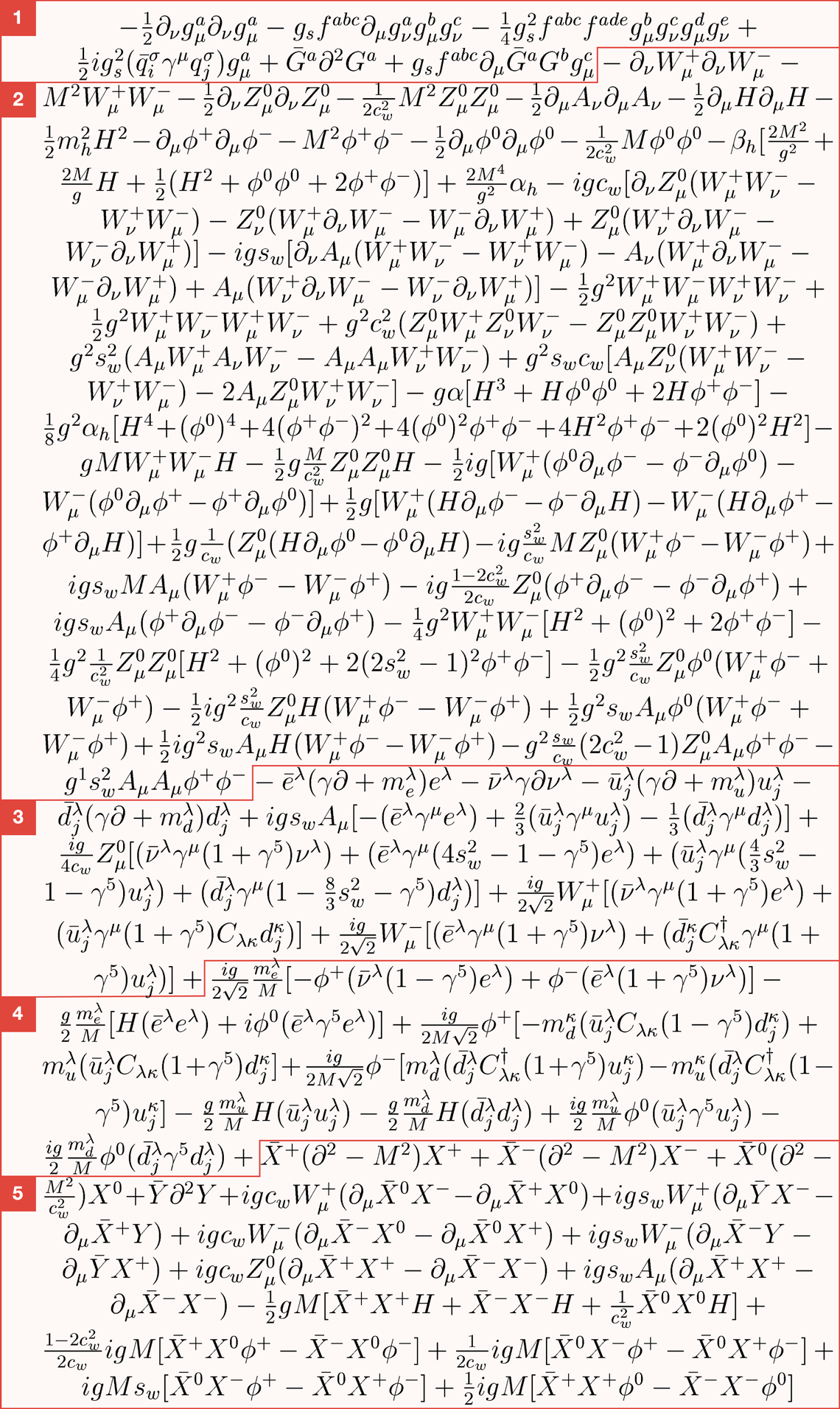Previously, we did a classical-relativistic derivation of Newton's constant G. Today we will derive it from Schrodinger's equation and Dirac's quantum field equation. Below are the variables we will use:
To derive G from quantum mechanics (which covers low-energy individual particles) we begin with Schrodinger's time-independent equation:
Consider two particles with the same total energy (H), but their potential (V,V') and kinetic (h-bar terms) energies differ. We set their respective Hamiltonians (H,H') equal to each other:
Below we define their respective wave functions:
At equation 6 above we calculated the double derivative of each kinetic-energy term. Below we define the complex conjugate of each wave function. We use these complex-conjugates to find the particles' expectation values (see equation 10):
At equation 11 we equate the particles' kinetic-energy difference with their potential-energy difference. Equation 12 is a quantum-mechanical version of Einstein's field equations: The wave numbers (k,k') have the same units as spacetime curvature.
Equation 15 above is the square of the gravitational velocity (v^2) between the two particles. At equation 16 below it is perfectly legal to multiply the right side by the particles' masses (2m) and the distance (r) between said particles if we also divide by those figures. From there we can derive equation 20.
At equation 20, we can see why Newton's constant (G) is constant. Any change in the mass (m) or distance (r) between the particles causes an offsetting change in the wave-number (k) ratio; i.e., spacetime curvature changes when the distance-mass ratio changes. However, you may have wondered what would happen to G if the two particles had the same wave numbers (and the same potential and kinetic energies). The wave-number difference would be zero (or at some ground state) and so would G!
Quantum field theory to the rescue. From here on, mass (m) shall be the mass (or mass equivalent) of a field within a given volume, not an individual particle. This field could be a vacuum (not necessarily a perfect vacuum) where half-spin particles are created and annihilated. We use Dirac's equation below to assist us:
Below we derive equation 26--the square of the field's energies.
Let's suppose that this field interacts with another field, but this other field contains more mass (m') and a lower average wave number (k'). At 29 below we compare the squared energy differences of these two fields. They may or may not be equal.
Using a similar procedure we once again derive G (see equation 36):
If the two sides of the equation are not equal, we throw in a factor of n to make them so. (If the sides are equal, n = 1.)
Now Newton's constant can be constant even if the two fields have identical masses and wave numbers. A zero difference in wave numbers is offset by a zero difference in mass. (A minimum non-zero ground state also helps G to be constant.) Note that a difference in mass is the mass we measure above a given field mass. For example, when calculating Earth's gravity, the Earth's mass does not include the vacuum field mass (m). However, the total mass (m') includes the Earth and the vacuum field mass (m). Thus the Earth mass is the mass difference or net mass.















































